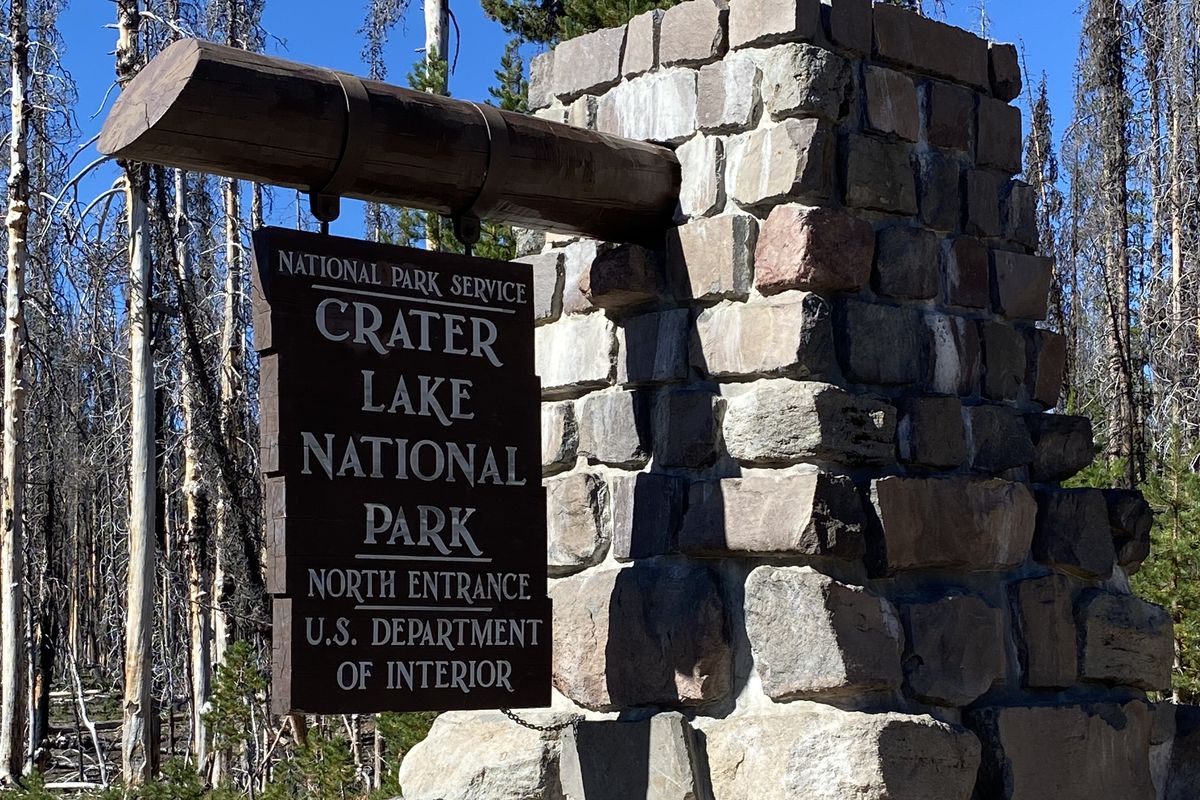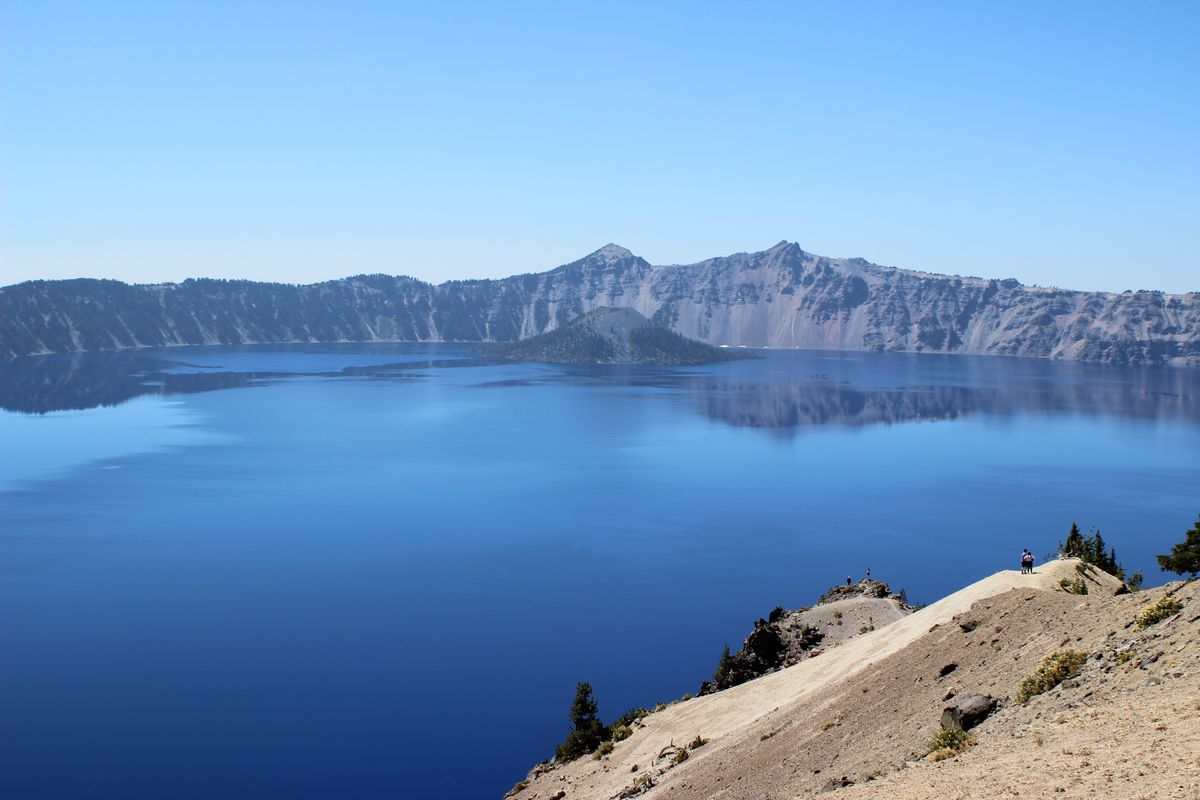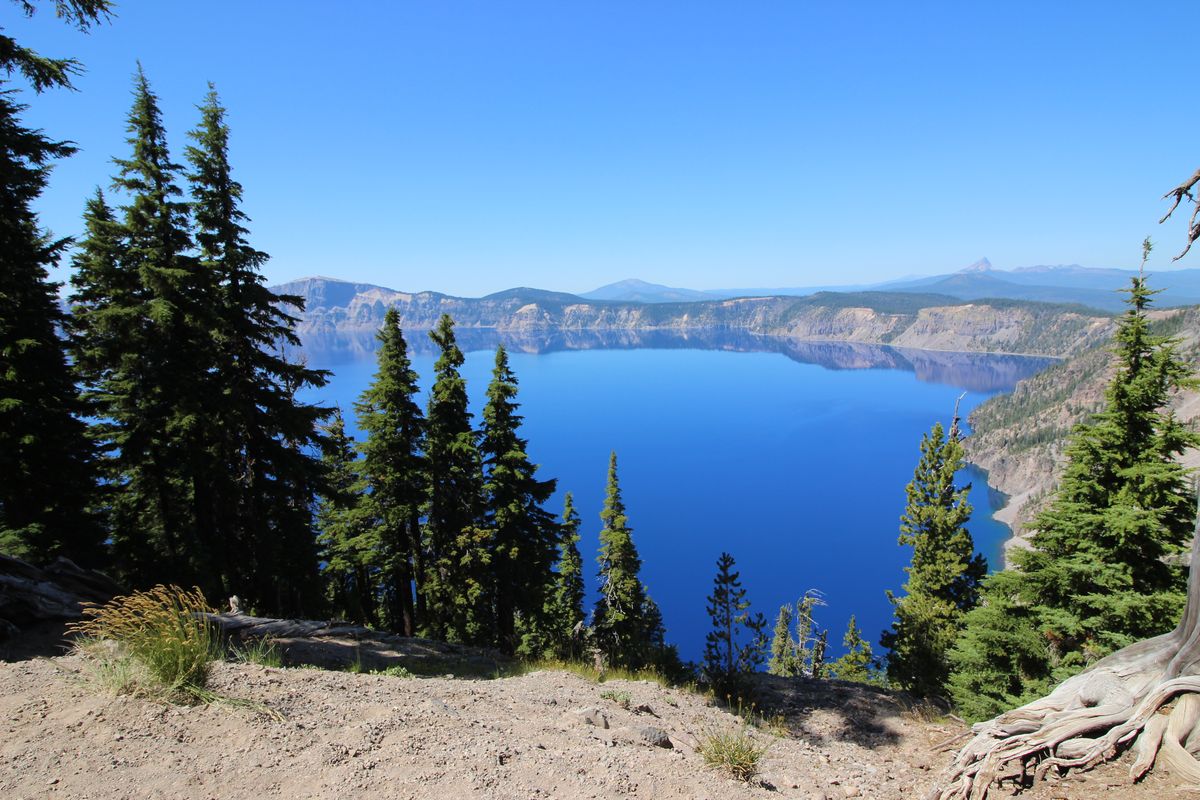Crater Lake: Pandemic doesn’t dull beauty of national park
Crater Lake National Park (Courtesy of Brent and Devon Nicholson)
A first glimpse of Crater Lake in Oregon is rather difficult to top.
It is dazzlingly blue, almost falsely so. You can see nearly all of it from the many roadside vantage points. And when your eyes scan its surface, no one is tubing. No fishing boats. Not even a kayak. It remains remarkably as it has been for hundreds of years.
We saw it in early August when our family of five ventured from Spokane to central Oregon, where we met our friends – a family of four – who came up from the Bay Area in California.
It was a perfect midpoint, a new destination for us all.
We originally planned out the trip in February. Our worry then was that we might be driving into a landscape laced with wildfire smoke. That we might need a mask for any other reason, like a worldwide pandemic, was something we had not considered.
But the pandemic hadn’t deterred others, either. We encountered overflowing roadside parking lots, campgrounds with few empty sites and rangers standing behind plexiglass.
Backpackers could tackle a loop in the park’s northwest quadrant, but most of the hikes are less than 4 miles round trip. It is a park designed for day hikes.
It does, however, include a stretch of the Pacific Crest Trail. At one point, our friend met a hiker who had set off, on foot, from Southern California five months earlier. He was reprovisioning at Mazama Village before continuing on his journey toward Canada.
I had just lugged an air mattress, fully inflated, about 300 feet from the bathroom to our campsite.
No longer did I feel all that accomplished.
The next day, we set out to explore the park. Our party of nine had its limitations, with children ranging in age from 22 months to 7 years old, so a hike down the only path to the water – which the park guide labeled as “strenuous” – seemed unwise.
But a hike up to Watchman Overlook, just 1.6 miles round trip and on a relatively cool morning, seemed more manageable. The ascent wasn’t difficult, and after a series of switchbacks, we reached the fire tower.
From it we got a spectacular vista over Wizard Island and across the entire crater, all the while clutching our children’s hands lest they somehow scale the 2-foot walls and tumble into the lake a thousand feet below.
Crater Lake formed 7,700 years ago, when the growing pressure inside then 12,000-foot Mount Mazama became too much, causing a violent eruption. When the magma chamber emptied, the mountain couldn’t support its own weight, so it collapsed and left a caldera. Over centuries, the caldera filled up with rain and snowmelt.
That geologic process created a lake whose deepest point, 1,943 feet, is the deepest of any lake in the United States. The water is so pure that it absorbs all the colors of the spectrum save blue, so that’s all our eyes see.
At about 13,000 acres, Crater Lake’s surface is not particularly large. Lake Pend Oreille in Idaho, impressively deep in its own right, has a surface area of about 85,000 acres. But though Pend Oreille’s surface area is about 6.5 times greater, it only holds about three times as much water as Crater Lake.
The only craft allowed on it is an official tour boat – I have no idea how they got a boat down there in the first place – but that wasn’t operating this summer.
The experience of being there, however, doesn’t feel like a great discovery in the way, say, hiking a few miles to a hidden alpine lake does. In those cases, the journey contributes to the beauty.
Crater’s status as a national park makes it a destination: a sticker to be put on a map.
That doesn’t make it less impressive, but it does make it less of an accomplishment to see it. You arrive, you see it, and, well, you’ve done it.
The destination is the goal.
So it wasn’t a surprise to see plenty of RVs like the one that arrived at the campsite across from us in the middle of the night and then departed the next morning.
After our hike, we drove the 33-mile rim route. The West Rim Drive, part of the north-south road through the park, had the busiest overlooks. But the East Rim Drive was much less crowded.
We stopped for a picnic near Pumice Point on the lake’s north side, where the gray jays brazenly seized upon any food that was momentarily abandoned. I glanced away from the sandwich in my hands, and a bird nearly tore it right from me.
Later, we hiked through a meadow on the park’s south side where our kids played in a stream, identified wildflowers and checked off a box in their Junior Ranger workbooks.
We returned to our campsite to prepare dinner, and then our kids reveled in making dirt angels in the dust.
It was then we were perhaps most thankful that our friends had stayed not at the adjacent campsite, but in a cabin with a shower that, unlike those in the campground, was open.
We packed up the next day, said our goodbyes and began our journey back to Spokane. As we passed the overlooks along the rim, we didn’t stop.
We had seen the lake already, and ahead of us was a long day of driving.







